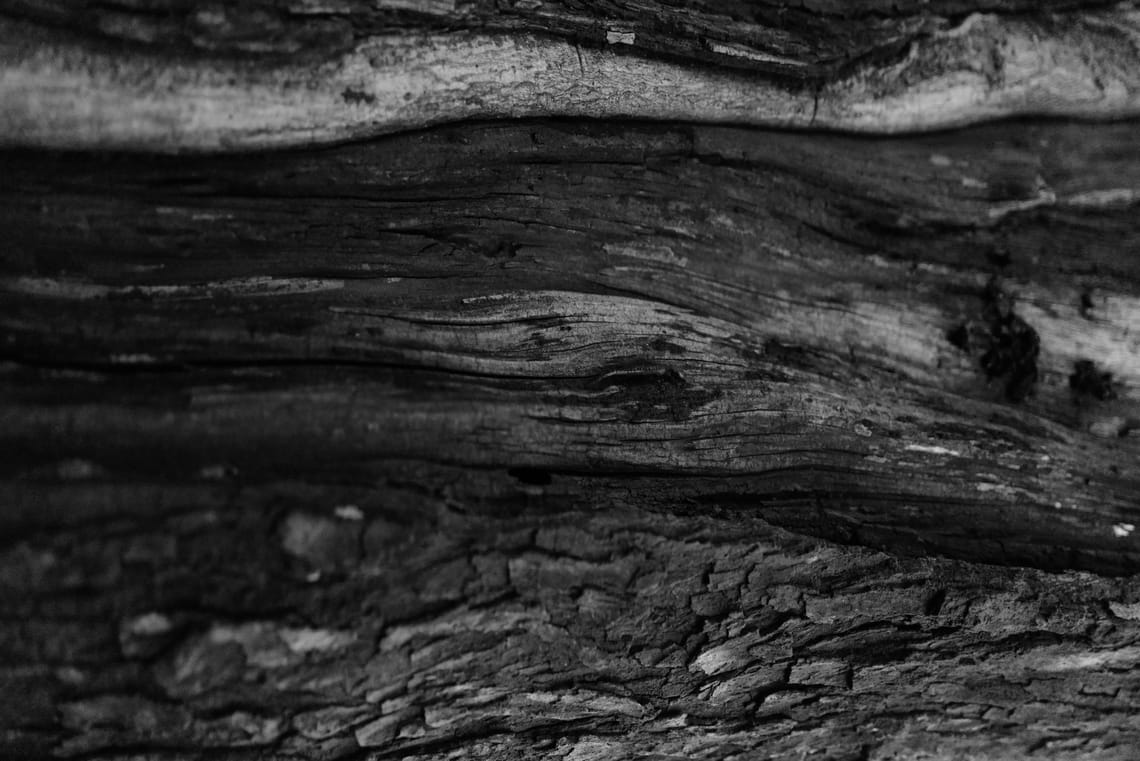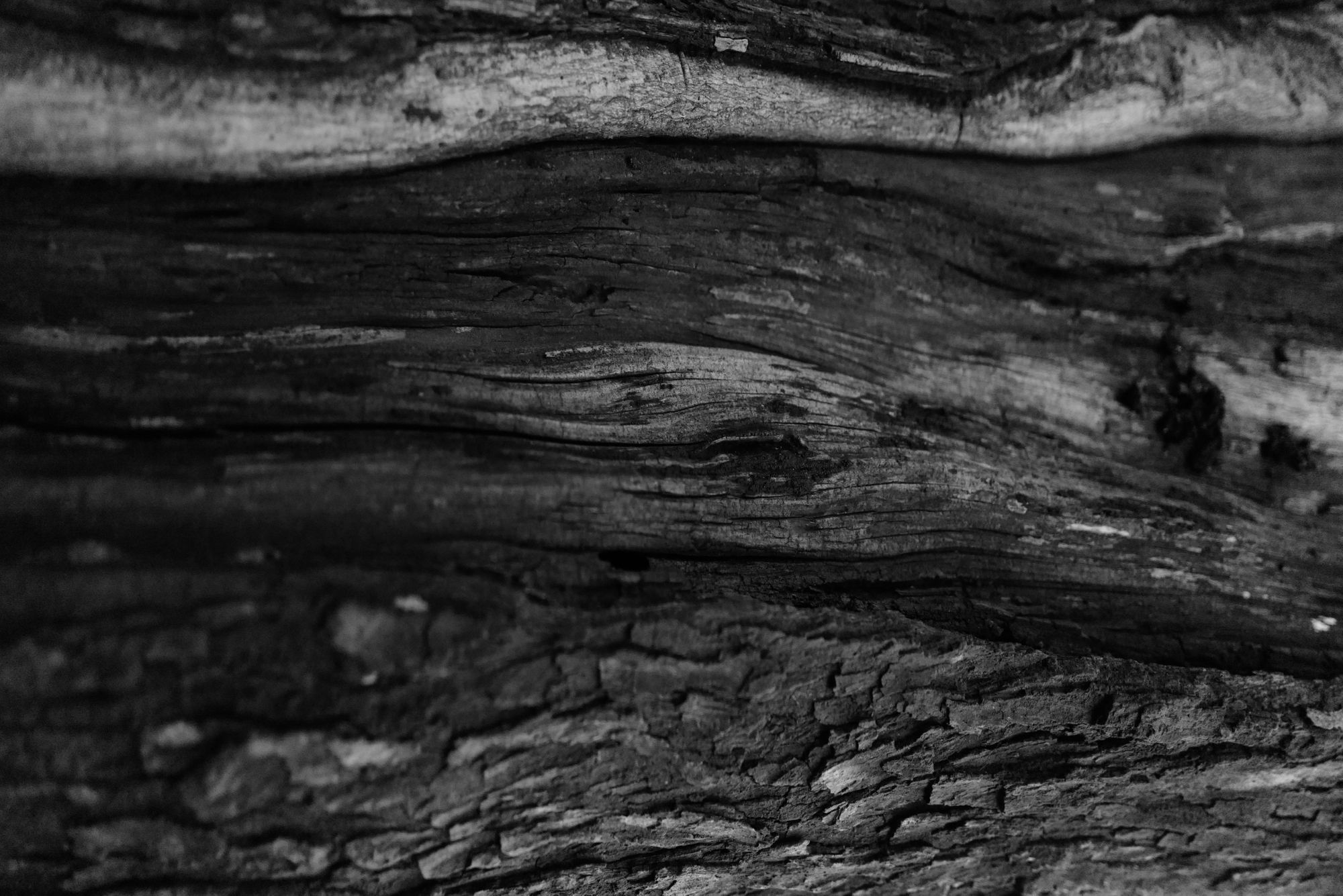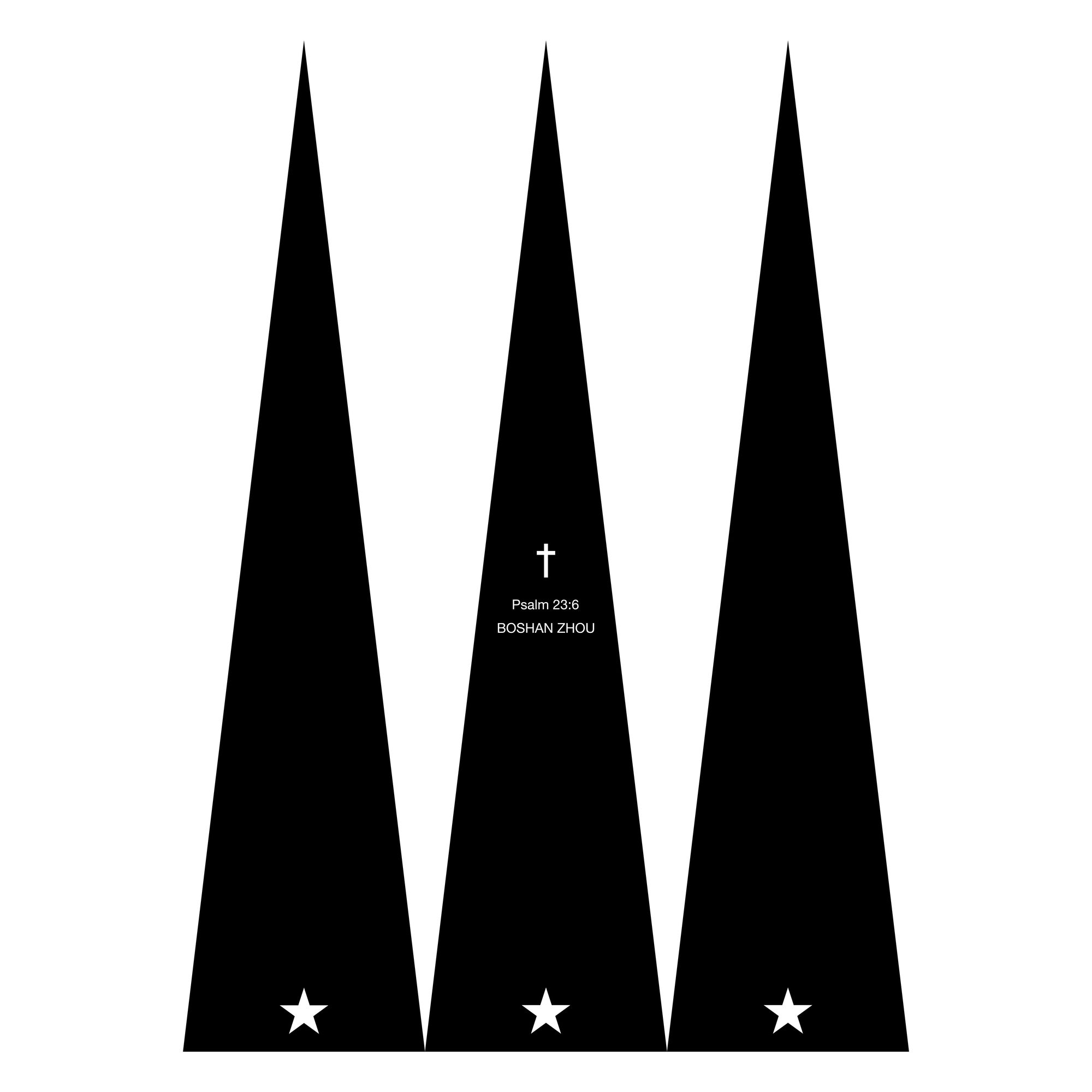
Genesis 36
标题:Genesis 36
年份:2020
尺寸:47.28 x 70.85 cm
Title: Genesis 36
Year: 2020
Dimension: 47.28 x 70.85 cm

「Genesis」系列作品,一共五十幅,对应《圣经》创世纪的五十章。
The "Genesis" series consists of 50 works, corresponding to the 50 chapters of the Bible's Genesis.
36 / 50.
36:1 以下是以扫的后代(以扫就是以东):36:2 以扫娶了迦南的女子为妻,就是赫人以伦的女儿亚大,和希未人祭便的孙女,亚拿的女儿阿何利巴玛;36:3 又娶了以实玛利的女儿、尼拜约的妹妹巴实抹。36:4 亚大给以扫生了以利法;巴实抹生了流珥。36:5 阿何利巴玛生了耶乌施、雅兰和可拉。这些都是以扫的儿子,是在迦南地生的。36:6 以扫带着他的众妻子、儿女和家中所有的人,以及他的牲畜、所有的牲口和他在迦南地所得的一切财产,离开他的弟弟雅各到别的地方去了。36:7 因为他们都有很多财物,所以不能住在一起;又因他们牲畜很多的缘故,他们寄居的地方也容不下他们。36:8 于是,以扫住在西珥山上。以扫就是以东。36:9 以下是西珥山以东人的始祖以扫的后代:36:10 这些是以扫众子的名称:以利法是以扫的妻子亚大的儿子,流珥是以扫的妻子巴实抹的儿子。36:11 以利法的儿子是提幔、阿抹、洗玻、迦坦和基纳斯。36:12 亭纳是以扫的儿子以利法的妾;她给以利法生了亚玛力。以上这些人是以扫的妻子亚大的子孙。36:13 流珥的儿子是拿哈、谢拉、沙玛和米撒。这些人是以扫的妻子巴实抹的子孙。36:14 以下是祭便的孙女、亚拿的女儿、以扫的妻子阿何利巴玛的儿子:她给以扫生了耶乌施、雅兰和可拉。36:15 以下是以扫子孙中的族长:以扫的长子以利法的子孙中,有提幔族长、阿抹族长、洗玻族长、基纳斯族长、36:16 可拉族长、迦坦族长、亚玛力族长。这些人是以东地以利法的族长,都是亚大的子孙。36:17 以扫的儿子流珥的子孙中,有拿哈族长、谢拉族长、沙玛族长和米撒族长。这些人是以东地流珥的族长,都是以扫的妻子巴实抹的子孙。36:18 以扫的妻子阿何利巴玛的子孙中,有耶乌施族长、雅兰族长和可拉族长。这些人是亚拿的女儿、以扫的妻子阿何利巴玛的族长。36:19 以上这些人就是以扫的子孙和他们的族长。以扫就是以东。36:20 以下是那地原有的居民,何利人西珥的儿子:罗坍、朔巴、祭便、亚拿、36:21 底顺、以察和底珊。这些人是以东地何利人西珥子孙中的族长。36:22 罗坍的儿子是何利和希幔;罗坍的妹妹是亭纳。36:23 朔巴的儿子是亚勒文、玛拿辖、以巴录、示玻和阿南。36:24 祭便的儿子是亚雅和亚拿。当年在旷野牧放他父亲祭便的驴,发现了温泉的,就是亚拿。36:25 亚拿的儿子是底顺;亚拿的女儿是阿何利巴玛。36:26 底顺的儿子是欣但、伊是班、益兰和基兰。36:27 以察的儿子是辟罕、撒番和亚干。36:28 底珊的儿子是乌斯和亚兰。36:29 以下是何利人的族长:罗坍族长、朔巴族长、祭便族长、亚拿族长、36:30 底顺族长、以察族长、底珊族长。这些都是何利人的族长,在西珥地按着他们的宗族作族长的。36:31 以色列人还没有君王统治之前,在以东地作王的记在下面:36:32 比珥的儿子比拉在以东作王,他的京城名叫亭哈巴。36:33 比拉死后,波斯拉人谢拉的儿子约巴接替他作王。36:34 约巴死后,从提幔地来的户珊接替他作王。36:35 户珊死后,比达的儿子哈达接替他作王;这哈达就是在摩押原野上击败了米甸人的;他的京城名叫亚未得。36:36 哈达死后,玛士利加人桑拉接替他作王。36:37 桑拉死后,大河边的利河伯人扫罗接替他作王。36:38 扫罗死后,亚革波的儿子巴勒.哈南接替他作王。36:39 亚革波的儿子巴勒.哈南死后,哈达接替他作王;他的京城名叫巴乌;他的妻子名叫米希他别,是米.萨合的孙女、玛特列的女儿。36:40 以下是以扫所出族长的名字(他们是按着自己的家族和住处命名的):亭纳族长、亚勒瓦族长、耶帖族长、36:41 阿何利巴玛族长、以拉族长、比嫩族长、36:42 基纳斯族长、提幔族长、米比萨族长、36:43 玛基叠族长和以兰族长。这些都是以东人的族长,在所得作为产业的地上,按着他们的住处作族长。以东的始祖就是以扫。
创世记 35
36:1 This is the account of the family line of Esau (that is, Edom).36:2 Esau took his wives from the women of Canaan: Adah daughter of Elon the Hittite, and Oholibamah daughter of Anah and granddaughter of Zibeon the Hivite—36:3 also Basemath daughter of Ishmael and sister of Nebaioth.36:4 Adah bore Eliphaz to Esau, Basemath bore Reuel,36:5 and Oholibamah bore Jeush, Jalam and Korah. These were the sons of Esau, who were born to him in Canaan.36:6 Esau took his wives and sons and daughters and all the members of his household, as well as his livestock and all his other animals and all the goods he had acquired in Canaan, and moved to a land some distance from his brother Jacob.36:7 Their possessions were too great for them to remain together; the land where they were staying could not support them both because of their livestock.36:8 So Esau (that is, Edom) settled in the hill country of Seir.36:9 This is the account of the family line of Esau the father of the Edomites in the hill country of Seir.36:10 These are the names of Esau’s sons: Eliphaz, the son of Esau’s wife Adah, and Reuel, the son of Esau’s wife Basemath.36:11 The sons of Eliphaz: Teman, Omar, Zepho, Gatam and Kenaz.36:12 Esau’s son Eliphaz also had a concubine named Timna, who bore him Amalek. These were grandsons of Esau’s wife Adah.36:13 The sons of Reuel: Nahath, Zerah, Shammah and Mizzah. These were grandsons of Esau’s wife Basemath.36:14 The sons of Esau’s wife Oholibamah daughter of Anah and granddaughter of Zibeon, whom she bore to Esau: Jeush, Jalam and Korah.36:15 These were the chiefs among Esau’s descendants: The sons of Eliphaz the firstborn of Esau: Chiefs Teman, Omar, Zepho, Kenaz,36:16 Korah,(Masoretic Text; Samaritan Pentateuch (also verse 11 and 1 Chron. 1:36) does not have Korah.) Gatam and Amalek. These were the chiefs descended from Eliphaz in Edom; they were grandsons of Adah.36:17 The sons of Esau’s son Reuel: Chiefs Nahath, Zerah, Shammah and Mizzah. These were the chiefs descended from Reuel in Edom; they were grandsons of Esau’s wife Basemath.36:18 The sons of Esau’s wife Oholibamah: Chiefs Jeush, Jalam and Korah. These were the chiefs descended from Esau’s wife Oholibamah daughter of Anah.36:19 These were the sons of Esau (that is, Edom), and these were their chiefs.36:20 These were the sons of Seir the Horite, who were living in the region: Lotan, Shobal, Zibeon, Anah,36:21 Dishon, Ezer and Dishan. These sons of Seir in Edom were Horite chiefs.36:22 The sons of Lotan: Hori and Homam.(Hebrew Hemam, a variant of Homam (see 1 Chron. 1:39)) Timna was Lotan’s sister.36:23 The sons of Shobal: Alvan, Manahath, Ebal, Shepho and Onam.36:24 The sons of Zibeon: Aiah and Anah. This is the Anah who discovered the hot springs(Vulgate; Syriac discovered water; the meaning of the Hebrew for this word is uncertain.) in the desert while he was grazing the donkeys of his father Zibeon.36:25 The children of Anah: Dishon and Oholibamah daughter of Anah.36:26 The sons of Dishon(Hebrew Dishan, a variant of Dishon): Hemdan, Eshban, Ithran and Keran.36:27 The sons of Ezer: Bilhan, Zaavan and Akan.36:28 The sons of Dishan: Uz and Aran.36:29 These were the Horite chiefs: Lotan, Shobal, Zibeon, Anah,36:30 Dishon, Ezer and Dishan. These were the Horite chiefs, according to their divisions, in the land of Seir.36:31 These were the kings who reigned in Edom before any Israelite king reigned:36:32 Bela son of Beor became king of Edom. His city was named Dinhabah.36:33 When Bela died, Jobab son of Zerah from Bozrah succeeded him as king.36:34 When Jobab died, Husham from the land of the Temanites succeeded him as king.36:35 When Husham died, Hadad son of Bedad, who defeated Midian in the country of Moab, succeeded him as king. His city was named Avith.36:36 When Hadad died, Samlah from Masrekah succeeded him as king.36:37 When Samlah died, Shaul from Rehoboth on the river succeeded him as king.36:38 When Shaul died, Baal-Hanan son of Akbor succeeded him as king.36:39 When Baal-Hanan son of Akbor died, Hadad(Many manuscripts of the Masoretic Text, Samaritan Pentateuch and Syriac (see also 1 Chron. 1:50); most manuscripts of the Masoretic Text Hadar) succeeded him as king. His city was named Pau, and his wife’s name was Mehetabel daughter of Matred, the daughter of Me-Zahab.36:40 These were the chiefs descended from Esau, by name, according to their clans and regions: Timna, Alvah, Jetheth,36:41 Oholibamah, Elah, Pinon,36:42 Kenaz, Teman, Mibzar,36:43 Magdiel and Iram. These were the chiefs of Edom, according to their settlements in the land they occupied. This is the family line of Esau, the father of the Edomites.
Genesis 36
在科学可以近乎解释一切的这个时代,我们已经倾向于习惯这个世界发生的一切和周围的一切,无论它有多不可思议,甚至习以为常到不再思考它的不可思议性。
宇宙为何以及如何诞生?为何宇宙大爆炸有一个从无到有的“开始”?为何生命会从“无”诞生到“有”?为何会有复杂、精密的生命的存在?为什么人体内的 DNA 和细胞像微观世界一样复杂而精确,却以高度有序的方式完成其工作,就像被设计和编程的另一个宇宙一样?
无论是哈雷彗星的椭圆运行轨道,笛卡尔浪漫的心形函数,人体曼妙的黄金分割,天空飘零的六边雪花,甚至一片落叶飘落,都是一段美妙的函数方程。大如宇宙,小如雪花,都能在这些公式之中看到神性的秩序。
爆炸带来的皆是毁灭。最初,什么都没有,“大爆炸”却产生了时间、物质和空间,没有逐步的生成,没有过渡的形态,只是一种二元翻转,从“不存在”到“存在”。宇宙复杂且广阔,却能用高度有序的数学公式来描述,诞生了秩序甚至生命。仅凭这一点就令人难以置信,足以使人们终生寻求真理。
“存在可以从不存在而来”的这种“自然发生论”观念的证据何在?怎么从非生命体获得生命?为何我们还是不知道如何切实地从死物质创造出生命,却坦然地默认生命可以从非生命诞生?
宇宙背后的真理如此令人惊叹又神秘,生命是如此不可思议,我们却如此地习以为常,甚至不再感叹这一切的神奇。
「自从造天地以来,神的永能和神性是明明可知的,虽是眼不能见,但藉着所造之物就可以晓得,叫人无可推诿。」罗马书 1:20
“科学的尽头是神学。” 我认为,尽管科学有其局限性,而神学提供了答案,但神学并不是要解释科学的不足,仅靠科学也无法触及神学的核心。然而,科学和神学并非对立面,也并不妨碍我们在探索求知的路上保留着一颗敬畏之心。
「诸天述说神的荣耀,穹苍传扬祂的手段。」诗篇 19:1
大自然的壮丽景色,很容易让人心生敬畏,但是我发现即便日常最被人忽视的细微之景,也是“穹苍”的一部分。从“大”可以很自然地想到“大”,但如果从“小”也能看到“大”,“大”则更显荣耀。
在这个系列,我不是在试图回答上述问题或者阐述我对上述问题的世界观和立场,我只是在一些我们习以为常甚至忽略的细微场景中看到了“创造者”留下的“痕迹”和“威严”。
因此,我制定了一条规则:试图通过被忽视的日常细微之景,从敬畏和好奇中看到“大”与“小”之间的关系,以小尺度为窗口,探索和思考宇宙,生命,永恒与创造之间的关系。
In an era where science can nearly explain everything, we have become accustomed to everything that happens in this world and everything around us, no matter how incredible it is, or even accustomed to stop thinking about its incredibility.
Why and how did the universe come from? Why does the universe's big bang have a "start" from nothing? Why is life born from "nothing" to "life"? Why is there complex, sophisticated creatures? Why is the DNA and cells in our body as complex and precise as a microcosm, but complete its work in a highly orderly manner, just like another universe designed and programmed?
Whether it is the elliptical orbit of Comet Halley, the romantic heart-shaped function of Descartes, the graceful golden section of the human body, the Six-sided snowflake falling from the sky, or even a leaf falling, all are wonderful function equations. As big as the universe and as small as snowflakes, divine order can be seen in these formulas.
The explosion brought about destruction. Originally, there was nothing, but the "Big Bang" produced time, matter, and space. There was no gradual development, no transitional forms, but a binary flip, from "non-existence" to "existence." The universe is complex and vast, but it can be described by highly ordered mathematical formulas, gave birth to order and even life. This alone is unbelievable enough to let people explore the truth throughout their lives.
What is the evidence for the "abiogenesis", which is "something can come from nothing"? How to get life from non-life? Why do we still not know how to actually create life from dead stuff, but frankly assume that life can be born from non-life?
The truth behind the universe is so incredible and mysterious, life is so incredible, we are so accustomed to it, we are no longer lamenting the incredibility of all this.
"For since the creation of the world God’s invisible qualities—his eternal power and divine nature—have been clearly seen, being understood from what has been made, so that people are without excuse." Romans 1:20
"The end of science is theology." I believe that although science has its limitations and theology provides the answer, theology is not to explain the deficiency of science, and science alone cannot reach the core of theology. However, science and theology are not opposites, and they do not prevent us from remaining awed on the road to exploring knowledge.
"The heavens declare the glory of God; the skies proclaim the work of his hands." Psalm 19:1
The magnificent scenery of nature can easily make people awe-inspiring, but I find that even the most slight sceneries that are most overlooked in daily life are also part of the "skies". You can think of "big" naturally from "big", but if you can also see "big" from "small", "big" is even more glorious.
In this series, I am not trying to answer the above questions or to express my views and positions on the above questions. I just saw the "traces" and "majesty" left by the "creator" in some slight scenes that we are accustomed to and even ignore.
Therefore, I created a rule: trying to see "big" from "small" - with awe and curiosity, through daily neglected slight scenes, with “small scale” as the window, to explore and think about the relationship between the universe, life, eternity and creation.
- Boshan Zhou
版权所有,未经许可,请勿擅自使用此图,侵权必究。
All rights reserved; those responsible for unauthorized usage and reproduction will be prosecuted.
©️ Boshan Zhou.
